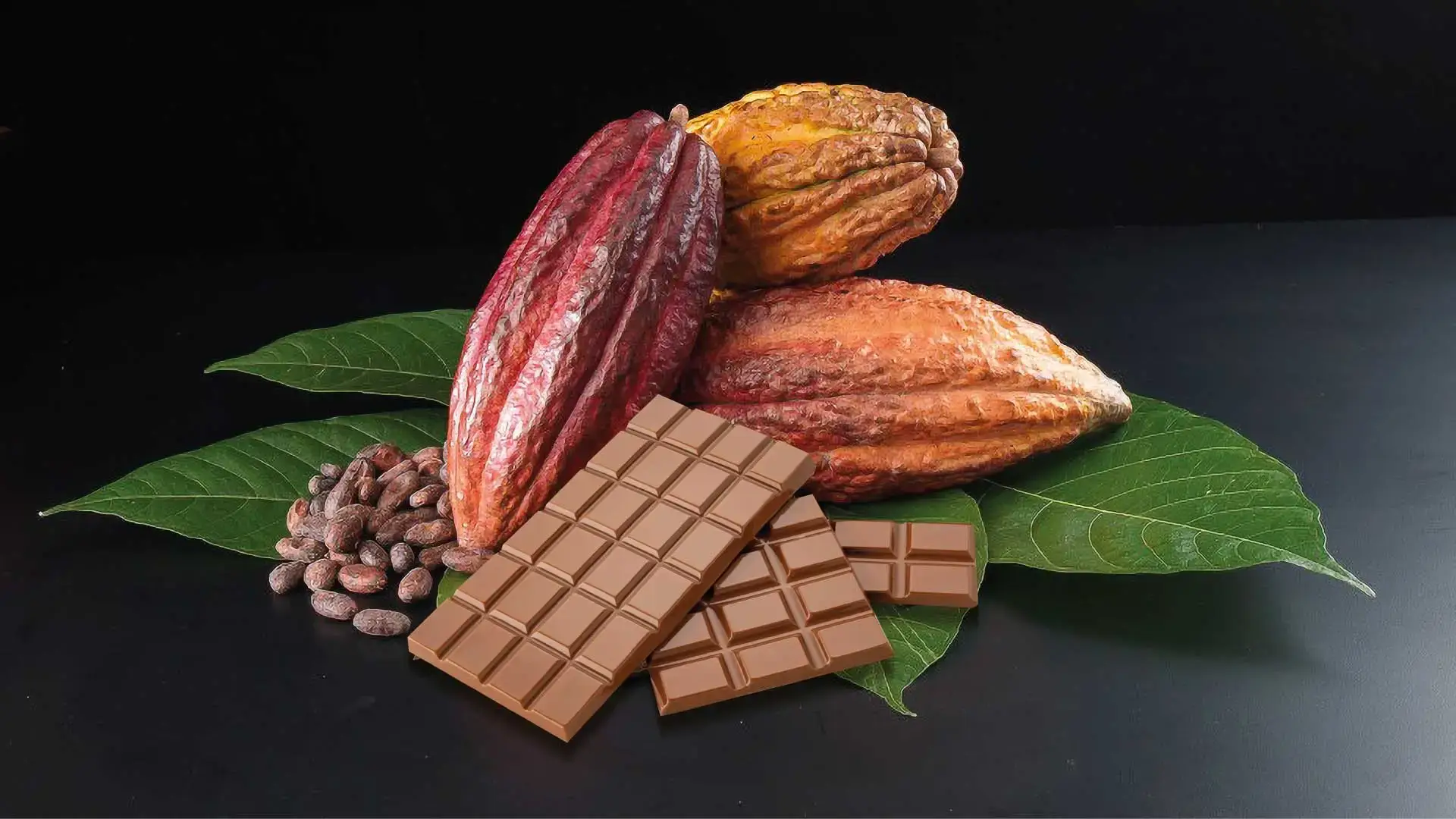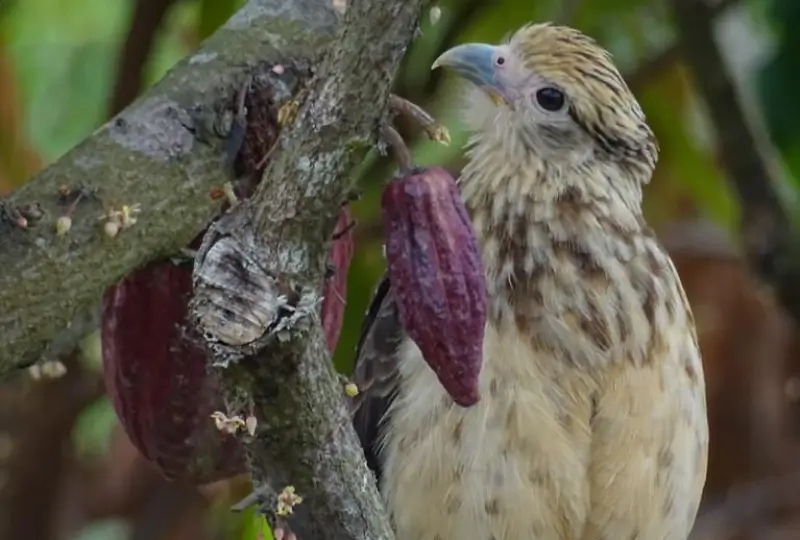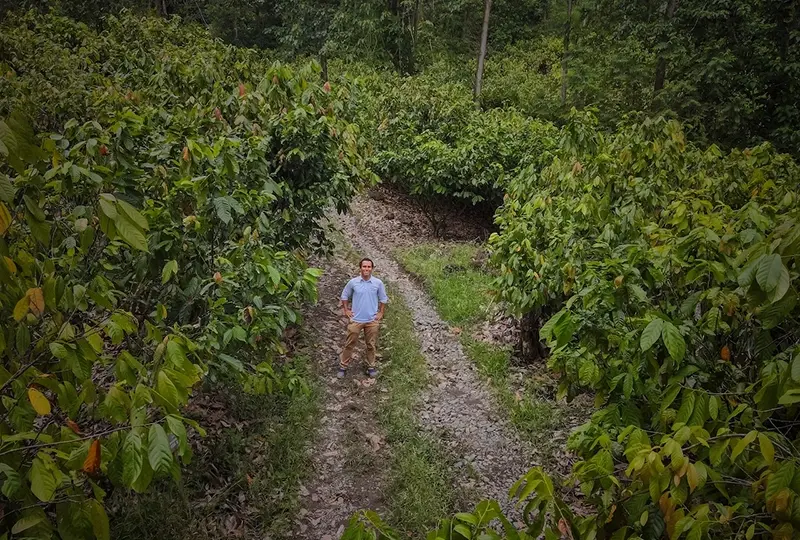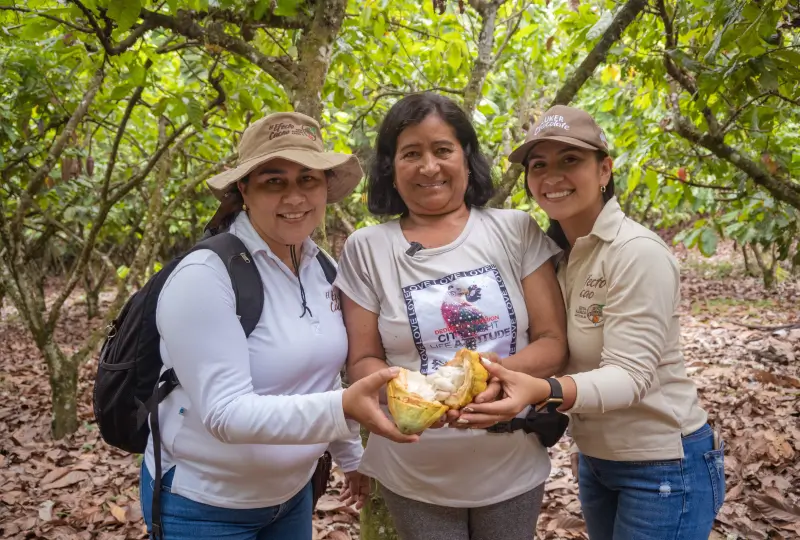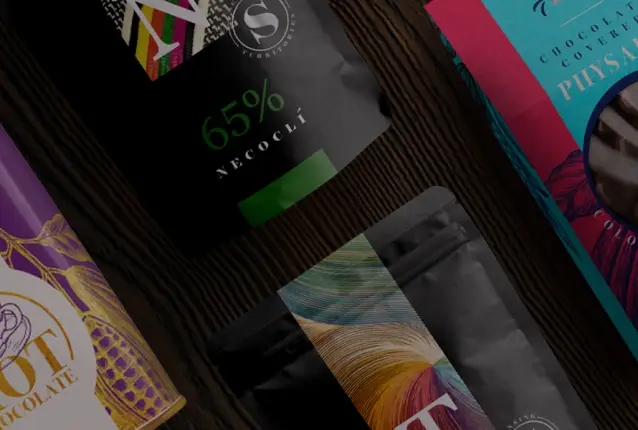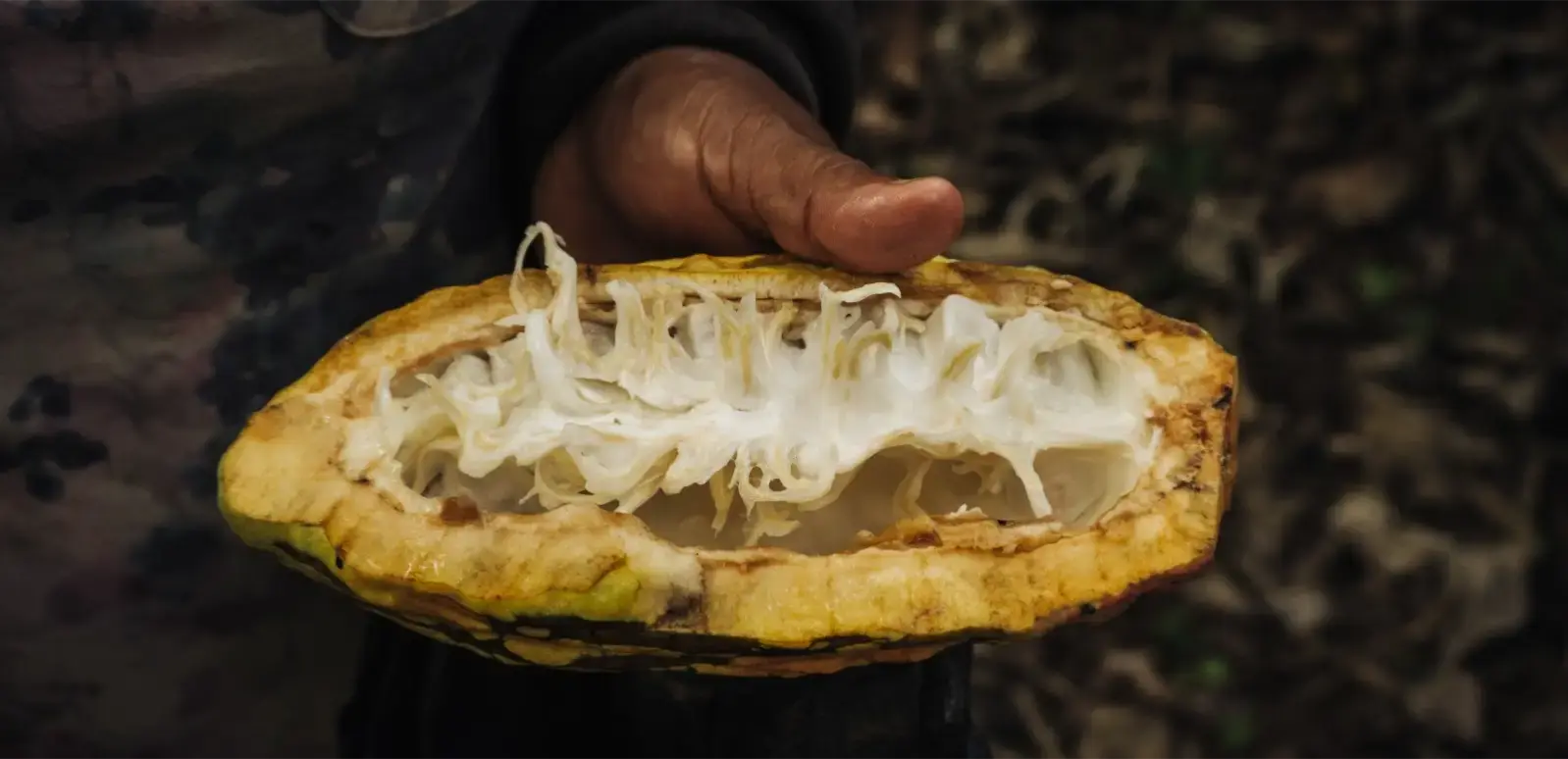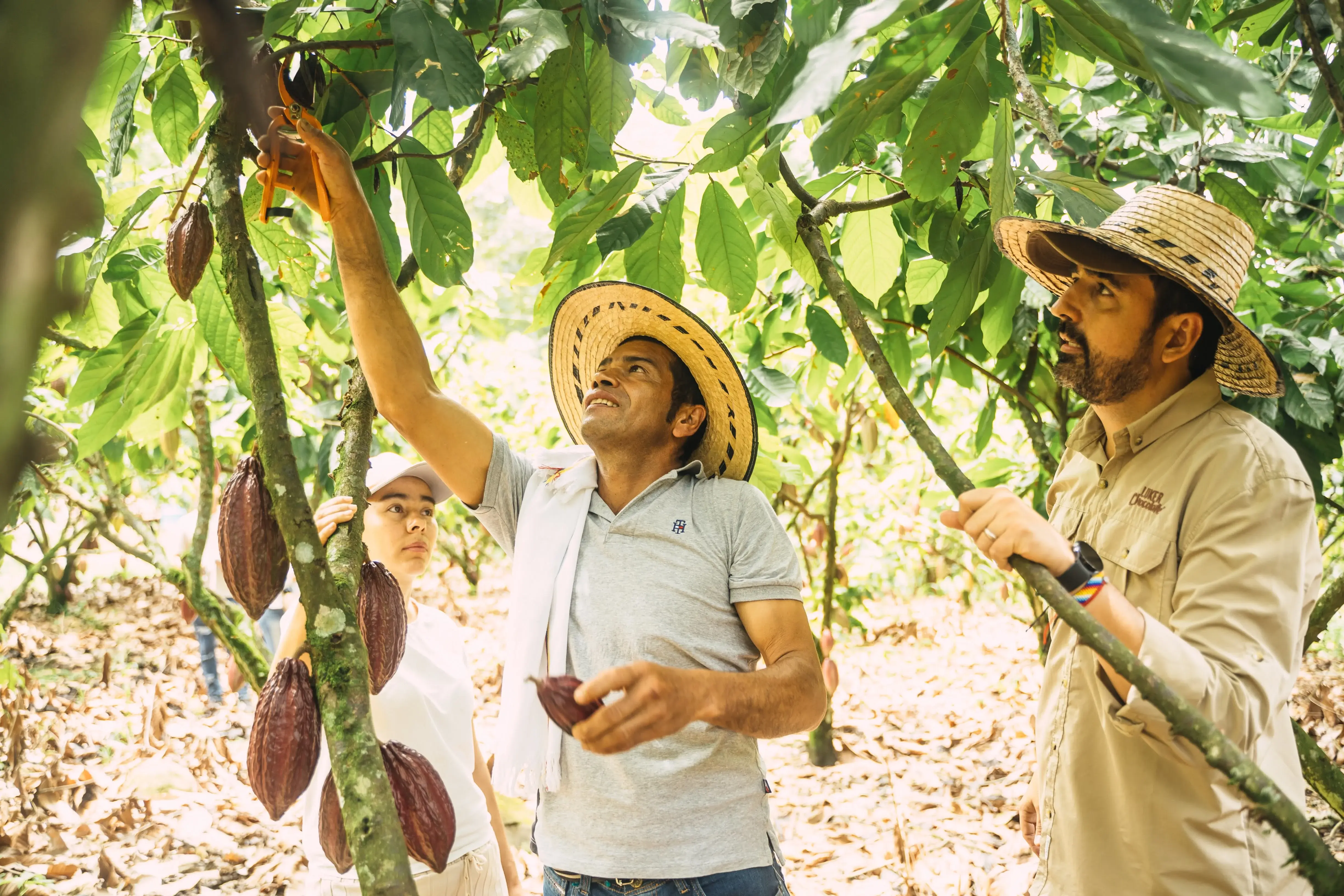2024 marked one of the most volatile years the cocoa sector has experienced recently. Cocoa prices reached historic highs, driven by supply constraints, rising costs, and increasing global demand. For cocoa-growing communities, these fluctuations introduced both opportunities and uncertainty.
Through a high price transfer model, farmers can receive a significant share of the international market price, supporting improved livelihoods, farm reinvestment, and food security. Chocolate suppliers should work closely with clients to navigate the complex market context pressures of price volatility and provide strategies that maintain a stable supply.
At Luker Chocolate, we focus on strengthening the cocoa value chain through fair, responsible, and transparent practices. While market shifts brought challenges, they also reinforced the need for long-term approaches prioritising shared value and sustainability.
In this blog, we share how we are addressing cocoa price volatility while continuing to focus on sustainability, traceability, and community-led progress.
Navigate the menu or keep on reading:
The Challenges of Cocoa Price Volatility
Cocoa is a global commodity exposed to a range of external pressures. In 2024, the market experienced one of its most volatile periods in decades, with prices reaching historic highs. This was not merely a matter of increased demand—it reflected a combination of weather-related disruptions, rising transport and input costs, and structural constraints in the value chain.
>Read about the factors contributing to cocoa price volatility<
For cocoa-growing communities, this volatility translated into heightened uncertainty. When prices fluctuate rapidly, it becomes harder to make decisions about investments, long-term planning, or even basic operational stability.

At Luker Chocolate, we saw the impact of this first-hand. While higher prices brought tangible benefits to producers, including a threefold increase in income, they also introduced new challenges across the sector that required a measured, values-driven response.
In 2024, we paid 103% of the international cocoa price at purchase—ensuring that cocoa suppliers received above-market compensation in a period of record pricing volatility. -Sustainability Progress Report 2024
Key challenges faced across the sector globally, included:
-
Difficulty securing predictable income at farm level
-
Increased costs across the supply chain, from inputs to logistics
-
Global pressure to meet sustainability and traceability expectations despite financial constraints
The volatility also impacted our clients—each affected differently depending on their market segment. We responded by providing open communication, and enhanced traceability tools to help manage short-term disruption without compromising long-term sustainability goals.
Despite the pressure, we remained focused on a pricing model that supports shared value. Cocoa-growing communities saw a meaningful benefit: we registered an income increase from roughly one-third of a rural household’s minimum needs to surpassing the minimum threshold of 30 million COP annually (USD $7,625).
Luker Chocolate’s Commitment to Fair Cocoa Pricing
In a year marked by price instability, we focused on a consistent goal: ensuring that cocoa-growing families receive a fair price. While international cocoa prices surged, many producers globally continued to receive less than 50% of the final market price.
Our pricing model works differently. In 2024, Luker Chocolate transferred an average of 103% of the New York cocoa market price to suppliers at the point of purchase. This figure includes bonuses based on quality, traceability, and sensory attributes, designed to reward best practices and strengthen transparency.
We also introduced a daily price adjustment system in September 2024 to reduce the exposure to weekly price swings—an important change to support producers during periods of extreme volatility.
“I work hand in hand with Luker for a better future. Thank you for fair prices and good commercial opportunities.”
— Álvaro, a cocoa farmer in Palestina, Caldas and sourcing partner of Luker Chocolate
Results from 2024:
-
Cocoa producers in our value chain tripled their income compared to the previous year.
-
The average earnings reached USD $7,625 per tonne, significantly higher than in Côte d’Ivoire (USD $2,396) and Ghana (USD $2,399).
-
Cacao associations improved their working capital and were able to purchase larger volumes, enhancing the reach of the value chain.
These figures are more than numbers—they reflect the outcomes of a pricing approach based on transparency, long-term collaboration, and respect. By aligning our model with the principles of shared value, we aim to support a more sustainable cocoa sector, where producers are not only included—but benefit meaningfully.
Sustainable Farming Practices and Cocoa Communities
Fair pricing is just one part of building a resilient cocoa value chain. At Luker Chocolate, we lead and invest in programmes through our sustainability plan, The Chocolate Dream, that support sustainable farming practices while responding to the needs of cocoa-growing communities. These efforts are delivered closely with local associations, NGOs, public institutions, and private sector allies.
Through The Chocolate Dream, our sustainability plan, we focus on strengthening economic, social, and environmental well-being in cocoa-growing regions. In 2024, we supported over 4,300 families across six regions in Colombia, carrying out 27 active projects targeting education, entrepreneurship, agroforestry, and human rights.

In 2024, 80 cocoa growers joined Colombia’s first regenerative cocoa farming group, developed in partnership with Fundación Bancolombia and Portafolio Verde. These participants adopted practices to improve soil health, agroforestry integration, and organic fertilisation. Many have already achieved Regenerative Organic Certified® (ROC) status and locally commercialise artisanal chocolate made with regenerative cocoa. Also, 1,397 families saw their income increase by 12% through improved post-harvest practices, stronger associations, and quality-based premiums, excluding the variable of price itself.
“Here, where cacao is our treasure, we recognise that Generación R is our ally in building a prosperous future full of opportunities.”
— Brayan, participant in The Chocolate Dream, Gigante, Huila
Our model also includes technical assistance and capacity-building delivered in partnership with local organisations. This work is guided by listening to communities and co-designing solutions that respond to regional needs.
In addition, The Chocolate Dream’s Dreamers Club provides an opportunity for our clients to directly fund impactful projects—connecting their sustainability commitments to origin-based outcomes.
What’s Next in Luker’s Vision for the Future of Cacao Sourcing?
Looking ahead, our goal remains clear: to support a cocoa sector that is economically viable, socially inclusive, and environmentally sound. The volatility of 2024 confirmed the need for a long-term approach rooted in trust, traceability, and fair value distribution.

Our sustainability efforts will continue to evolve through The Chocolate Dream, with a focus on expanding initiatives that deliver tangible outcomes across cocoa-producing regions in Colombia. In 2025, we will scale projects that have already shown measurable impact, especially in regenerative agriculture, income diversification, and youth education.
We also remain committed to environmental leadership. In 2024, we reached 100% EUDR compliance for all EU-bound exports, supported by our internal Luker Trace system, which provides full traceability and monitors forest impact across the supply chain.
As of October 2024:
100% of exports to Europe complied with EU Deforestation Regulation
4,732 farms were mapped for traceability and sustainability data
28.3% of cocoa purchases were traceable directly to individual producers
Our path forward includes:
-
Further developing regenerative agriculture through technical partnerships and expanding the reach of ROC-certified producers.
-
Continuing to improve carbon performance, with a 22% reduction in energy and industrial emissions achieved by the end of 2024 and new targets aligned with our net-zero roadmap.
-
Following the successful transformation of our Casanare farm, we are creating products and materials with upcycled cocoa by-products, supporting circular economy innovation in the sector.
The future of chocolate depends on how we shape its origins. Our role is to build systems that offer opportunity, resilience, and dignity for everyone involved—starting at the source.
What Brands Can Do for a Resilient Cocoa Sector
Price volatility is one of the most visible challenges in the cocoa sector, but beneath the numbers lies a broader question: how can we ensure a reliable, sustainable, and equitable cocoa supply for the future?

The answer lies not in short-term fixes but in long-term, collaborative efforts.
Ensuring the continuity of cocoa supply demands research investment, appropriate technology development, and knowledge exchange spaces. Cocoa farmers must have access to research findings, practical tools, and the ability to evaluate and implement new techniques. This includes areas such as agroforestry, soil management, disease prevention, and post-harvest practices.
At the same time, the sector must prioritise:
-
Open dialogue where producers can share their experiences and contribute to innovation
-
Transparent sourcing practices that reward quality and traceability
-
Fair relationships that foster stability, fair prices and growth in cocoa-growing regions
A joint approach—linking sustainability, technology, economic planning, and social impact—is essential for a consistent and quality-driven cocoa supply.
In this context, procurement is more than a transaction. The sourcing choices made by brands and buyers send signals through the entire value chain. Being intentional about sourcing—understanding who benefits, how pricing is shared, and how practices that strengthen communities—can help reshape the future of chocolate.
